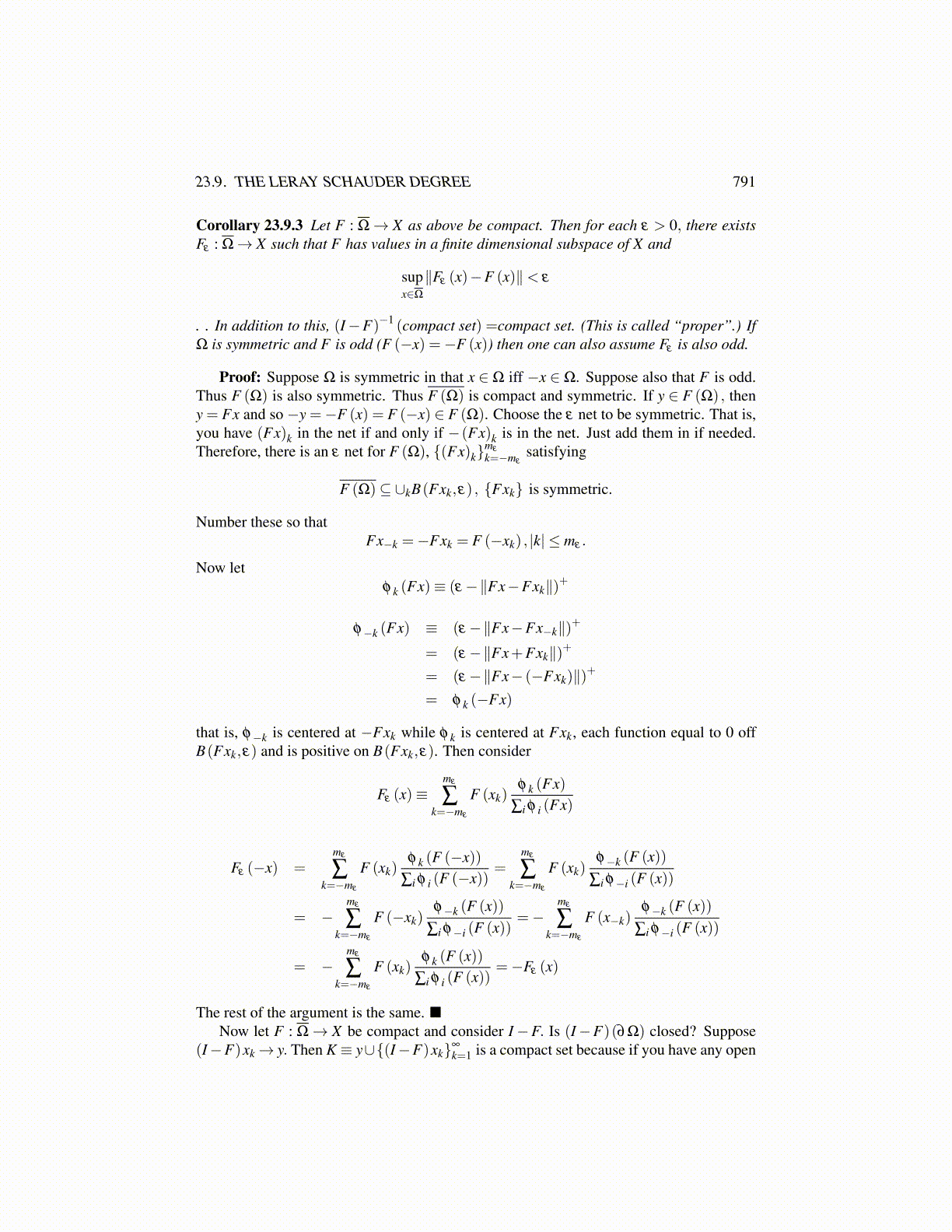
23.9. THE LERAY SCHAUDER DEGREE 791
Of course x is arbitrary and so
supx∈Ω
∥Fε (x)−F (x)∥< ε.
Next consider the second claim. Let K be compact. Consider
{xk} ⊆ (I−F)−1 (K) .
It is necessary to show that it has a convergent subsequence. Then {(I−F)(xk)} is asequence in K and so it has a convergent subsequence still denoted with subscript k suchthat (I−F)(xk)→ y. The xk are in a bounded set Ω and so, from compactness of F, thereis a further subsequence, still denoted with subscript k such that Fxk → z. It follows thatxk→ y− z and hence every sequence in (I−F)−1 (K) has a convergent subsequence.
Corollary 23.9.3 Let F : Ω→ X as above be compact. Then for each ε > 0, there existsFε : Ω→ X such that F has values in a finite dimensional subspace of X and
supx∈Ω
∥Fε (x)−F (x)∥< ε
. . In addition to this, (I−F)−1 (compact set) =compact set. (This is called “proper”.) IfΩ is symmetric and F is odd (F (−x) =−F (x)) then one can also assume Fε is also odd.
Proof: Suppose Ω is symmetric in that x ∈ Ω iff −x ∈ Ω. Suppose also that F is odd.Thus F (Ω) is also symmetric. Thus F (Ω) is compact and symmetric. If y ∈ F (Ω) , theny = Fx and so −y =−F (x) = F (−x) ∈ F (Ω). Choose the ε net to be symmetric. That is,you have (Fx)k in the net if and only if −(Fx)k is in the net. Just add them in if needed.Therefore, there is an ε net for F (Ω), {(Fx)k}
mε
k=−mεsatisfying
F (Ω)⊆ ∪kB(Fxk,ε) , {Fxk} is symmetric.
Number these so thatFx−k =−Fxk = F (−xk) , |k| ≤ mε .
Now letφ k (Fx)≡ (ε−∥Fx−Fxk∥)+
φ−k (Fx) ≡ (ε−∥Fx−Fx−k∥)+
= (ε−∥Fx+Fxk∥)+
= (ε−∥Fx− (−Fxk)∥)+
= φ k (−Fx)
that is, φ−k is centered at −Fxk while φ k is centered at Fxk, each function equal to 0 offB(Fxk,ε) and is positive on B(Fxk,ε). Then consider
Fε (x)≡mε
∑k=−mε
F (xk)φ k (Fx)
∑i φ i (Fx)